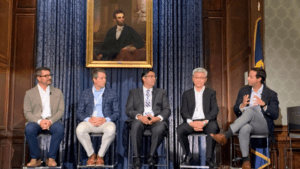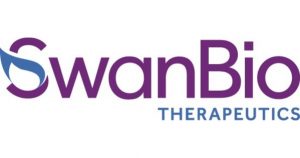
The Year of the Zebra – Elsevier Shines Spotlight on Rare Diseases
By Alex Keown
March 7, 2023
There are approximately 10,000 known rare diseases in the world, afflicting about 300 to 400 million people across the globe. Those staggering numbers suggest rare diseases may not be so rare.
“People don’t understand how common these rare diseases are. The 300 million number blows their minds,” said Shiv Gaglani, co-founder of Osmosis from Elsevier, a video education platform for clinicians and caregivers.
To shine a light on rare diseases, Osmosis from Elsevier, a division of Philadelphia-based analytics company Elsevier, launched the “Year of the Zebra,” a global initiative to address the needs of the world’s rare disease community. The goal will be to highlight one “Zebra,” or rare disease each week to shine a light on patients with the disease and the global efforts to develop therapies for them. The zebra has become a term to define rare disease, in part due to their rarity compared to horses.
When Gaglani was in medical school at Johns Hopkins University, he said they were trained to initially think of horses when making a diagnosis, rather than a zebra.
“It’s generally good advice to think about the simplest things,” Gaglani said. However, he added that kind of thinking contributes to the lengthy time it takes for a rare disease diagnosis. On average, it takes four to nine years for a rare disease to be diagnosed. Patients are back and forth for years between physicians before symptoms are finally narrowed down to a correct diagnosis, Gaglani added.
This year marks the 40th anniversary of the Orphan Drug Act, landmark legislation passed in 1983 designed to stimulate the development of new drugs aimed at rare diseases. In the United States, rare diseases are defined as a disease that affects fewer than 200,000 people.
Through the video campaign featuring patients from around the world battling these rare diseases, Gaglani hopes to spur on additional drug development. Although patient populations for rare diseases can be smaller, Gaglani said the research can actually lead to breakthroughs for more common conditions. He noted research into hypercholesterolemia, a lipid disorder that causes high cholesterol, led to the development of statins, which are commonly used throughout the world today for the treatment of high cholesterol.
When the campaign launches, the videos will highlight some of the more commonly-known rare diseases, such as cystic fibrosis, multiple sclerosis, Huntington’s disease and sickle cell anemia. Eventually, some more obscure rare diseases will be highlighted in the videos, Gaglani said. One of those will be hyper IgM syndrome, an extremely rare, inherited immunodeficiency disease characterized by decreased blood levels of immunoglobulin G and normal or elevated levels of immunoglobulin M. Gaglani said this disease impacts one in 1 million people.
“Part of the benefit of learning about this condition is not just learning how to identify but it’s clarifying what it means to people who have the disease,” he said. “We’ve seen what’s possible with Operation Warp Speed and we hope we can inspire clinicians to make this the decade of the Zebra.”
Gaglani said they hope the campaign will foster a collaborative environment between researchers and patient advocacy organizations in order to speed along development of therapeutics and improve the lives of these patients. The struggles many of these patients have gone through, from diagnosis to treatment, if available, is nothing short of heroic, he said.
“We want to make sure everyone is treated the way they deserve to be treated,” he said.
Videos will be featured on Osmosis.org, the Elsevier Rare Disease Healthcare Hub, as well as Osmosis’ YouTube Channel, which has 2.7 million subscribers. Gaglani said Osmosis from Elsevier is well known for the massive library of health educational videos currently available. That has streamlined the development of the Year of the Zebra content.






